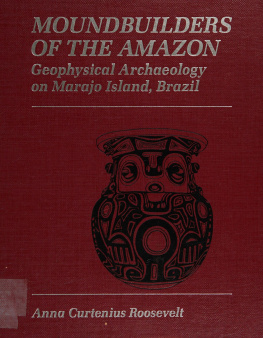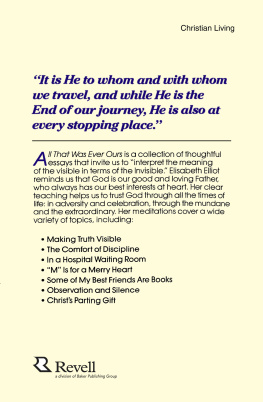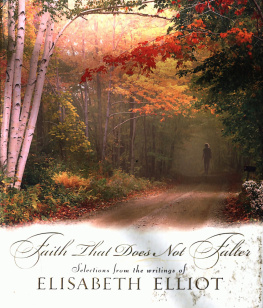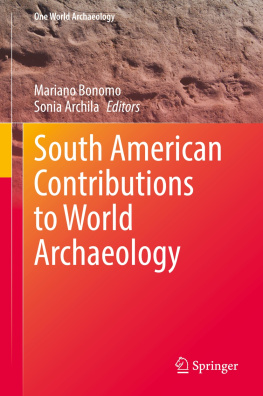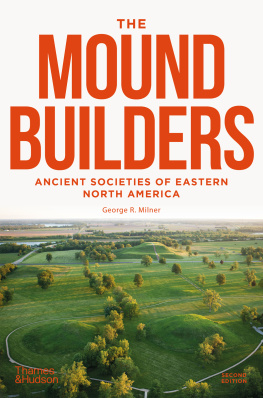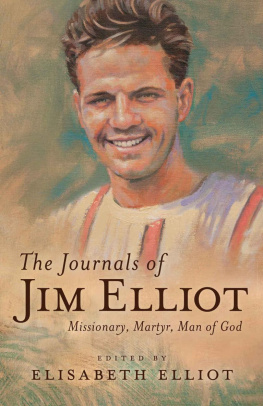Ohio University Press, Athens, Ohio 45701
www.ohio.edu/press
2005 by Ohio University Press
Printed in the United States of America
All rights reserved
Ohio University Press books are printed on acid-free paper

13 12 11 10 09 08 07 06 05 5 4 3 2 1
Library of Congress Cataloging-in-Publication Data
The emergence of the moundbuilders : the archaeology of tribal societies in Southeastern Ohio / edited by Elliot M. Abrams and AnnCorinne Freter.
p. cm.
Includes bibliographical references and index.
ISBN 0-8214-1609-X (cloth : alk. paper) ISBN 0-8214-1610-3 (pbk. : alk. paper) 1. Mound-buildersOhioHocking River Valley. 2. Indians of North AmericaOhioHocking River ValleyAntiquities. 3. Indians of North AmericaOhioHocking River ValleySocial life and customs. 4. Excavations (Archaeology)OhioHocking River Valley. 5. Hocking River Valley (Ohio)Antiquities. I. Abrams, Elliot Marc, 1954 II. Freter, AnnCorinne, 1957
E78.O3E64 2004
977.1'9701dc22
2004018890
PREFACE
T HE VAST MAJORITY of societies that have existed did so in the absence of writing, precluding self-description or documentation by anthropologists, historians, folklorists, or other social scientists. For these people who lived before the written record or the curious eye of outside observers, archaeology remains the only means through which they may be included in the broad spectrum of the human experience. To bring these cultures to light is the challenge of archaeology. From research design to fieldwork, from analysis to results, archaeology remains an ambitious undertaking, yet it is unmatched in furthering our understanding of the people who lived during these early eras in human social history.
The indigenous societies of the Ohio Valley were part of an ancestry that extended back at least ten thousand years. The description and understanding of these societies, largely known through archaeology, is relevant to living descendants and others interested in how these unique societies lived, grew, and changed in the millennia prior to the modern industrial world. This book is about the indigenous societies of one such valley in southeastern Ohiothe Hocking River Valley. We present archaeological data collected over the past two decades, in conjunction with earlier research. We begin this sequence of societal change at the Late Archaic period, about 3000 B.C. , when people lived in nomadic hunting and gathering communities and end at the Late Prehistoric period, about A.D. 1450, as communities of settled maize agriculturalists developed. Each chapter details this process based on time-specific data, and accordingly, the book chapters are arranged chronologically, moving the reader through time to facilitate the analysis of culture change.
Scholarship from various arenas in archaeology is assembled to produce this nearly five-thousand-year narrative in the Hocking Valley. A diverse assemblage of archaeologists from academia, government, and the private sector brings to this volume expertise in anthropology, geography, material science, and botany. Accordingly, chapters variously describe and analyze the spatial modeling of settlement patterns, the foods hunted, collected, or grown by varying groups through time, and the physical attributes of tools manufactured by distinct communities. However, the overarching theme of each chapter is drawn from anthropology, linking societies from each time period to a broad model considering the emergence and expansion of tribal institutions; that is, each chapter contributes more data and analysis to document the process through which the descendants of nomadic hunting and gathering societies eventually became sedentary agriculturalists. This process occurred in many regions of the world, particularly the Near East, Mesoamerica, Africa, and South America, and this volume ultimately aligns indigenous Hocking Valley societies with them, illuminating the importance of the valleys rich archaeological heritage.
To accomplish this goal we employ an array of modern methods. This volume contains the first Geographic Information System (GIS) analysis of sites throughout the valley and offers the first demographic reconstruction of communities. Through the use of radiocarbon accelerator mass spectroscopy (AMS) dating, we present the earliest direct evidence for maize agriculture in the Hocking Valley, and suites of regular radiocarbon dates confirm the earliest use of pottery. Detailed archaeobotanical analyses serve as the basis for dietary and economic reconstruction, while x-ray diffraction and x-ray fluorescence are used to identify pottery clay sources. These and other contemporary scientific techniques collectively make possible the identification of behaviors and institutions as they were modified through the generations.
One of the primary goals of contemporary archaeology is to disseminate research findings to as broad an audience as possible, especially the interested and informed public, since the preservation of the archaeological heritage left to us by this countrys first inhabitants lies in the publics appreciation of its irreplaceable worth. Therefore, although professional jargon is sometimes unavoidable, all authors have tried to produce chapters that are readable by the interested layperson yet retain the rigor of the professional archaeologist.
ACKNOWLEDGMENTS
T HIS BOOK IS the result of the effort and consideration of many individuals and institutions. Ohio University has steadily supported the Field School in Ohio Archaeology conducted by Abrams since 1986, providing financial support in 1986, 1988, and 1990. We specifically thank the deans office of the College of Arts and Sciences in this regard. The David L. Hudnell Fund for Archaeological Research and Field School has contributed funds for equipment used in the field school at Ohio University since 1998. Funding for radiocarbon dating of samples from the Boudinot 4 site, the County Home site, and the Allen site was generously provided by the John Baker Foundation of Ohio University in three separate grants to Abrams. Partial funding of the radiocarbon dating from site 33AT441 came from the David L. Hudnell Fund, and funding for dating from the County Home site was supplemented by the Jeanette Grasselli Brown Teaching Award to Abrams.
Logistical support for the Allen site lithic analysis was provided by BHE Environmental, Inc., and equipment for the survey and mapping of the Swinehart Village site was provided by Ohio Valley Archaeological Consultants, Inc. The Ohio Historic Preservation Office, and especially Kyle Smith and Brian Kleinhenz, kindly provided settlement data used in the volume, and the staff of the Archaeology Department at the Ohio Historical Society and Dr. Martha Otto made the Robert M. Goslin Collections available to John Schweikart. Further support came from the Cartography Lab at Ohio University and the Department of Sociology and Anthropology, Ohio University.


